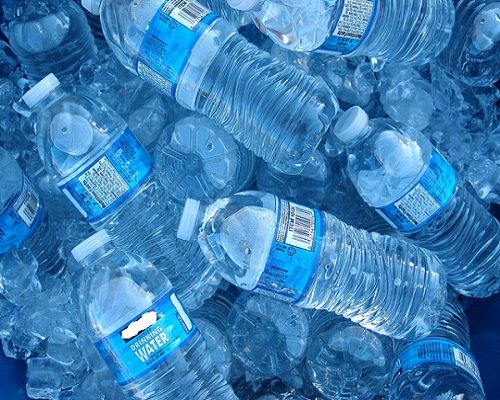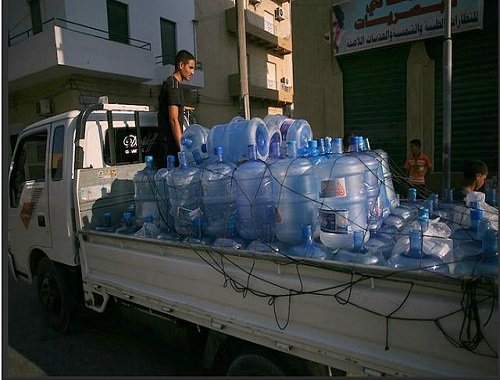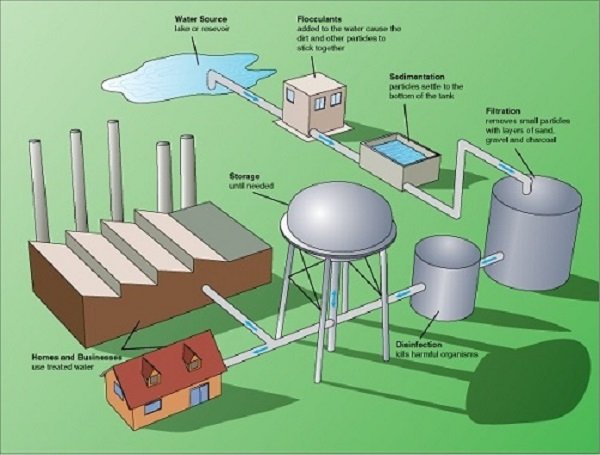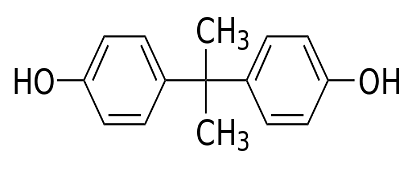Is Table Water or Water Packed in Dispensable Bottles Safer Than Sachet Water?
Good day Steemians, in my last post, I wrote about why we should be careful consuming sachet water and @gidionline asked about the integrity of table water in his comment, it is important to remind ourselves that as sachet water is accessible and obtainable, other alternatives such as table water or water packed in dispensers are also available. Today, I will be writting about these alternatives.
As said in the previous post water is a necessity for mankind. The demand for this commodity is on the rise as the population increases. It is an immediate responsibility of the Government to provide a sustainable source of potable water for its citizenry. The case is different as several hiccups create barriers to fulfil this responsibility thereby subjecting the populace to seek alternative means of obtaining potable water.
Satisfying the need for potable water which is not provided by the government is done majorly by consuming packaged water which is sold in two forms namely:
- Plastic sachets called pure water
- Plastic bottles – this ranges in size from small polyethylene terephthalate bottles of 500 ml, 750ml, 1.5 L capacity to large cans of 20 L popularly called dispenser cans.
The question is, is the table water or water packed in dispensers safer than sachet water? Let's find out.
Asides the taste and odour, one question is this, Do we bear our health in Mind when gulping down bottled water? There are all sorts of brands in the country and consumer preference is based on the quality derived from production processes which reflects on the price. In Nigeria, bottled water and water in dispensable cans are assumed to be safer than water dispensed and sold in sachets, probably because they are more expensive and patronized mainly by people with a relatively large income.
With the involvement of institutional and government business investment, large-scale multinational companies, medium scale business enterprises, and in some cases small-scale entrepreneurs and with the use of various water purification methods which may be one of or a combination of two of chlorination, ozonisation, ultraviolet irradiation and filtration as claimed by this companies, one will expect the water produced to be safe for consumption however sachet water and bottled water has been reported to be associated with outbreaks of infections. Studies on the quality of bottled water in many parts of the country have also shown that some bottled water samples do not meet with the required microbiological quality and standard.
Even when the consumer has a choice, it is not evident that the water is safe for drinking. Why? Biological tests carried out on some samples of bottled water tell a different tale in contrast to the product hype from the producer and the look-good packaging the bottles and dispensers come with. In most cases, some unsuspecting microscopic entities might be having a full-day in your ready to consume water. You innocently send them down your throat and finding a conducive environment they get down to the business of multiplication and production of disease.
The source of the packaged water is a crucial factor that must not be overlooked.
The various water resources are; salt water, surface water and groundwater.
Surface water is accessible, while groundwater held in Aquifers is accessed by drilling wells, it is in wide use and about 90-95% of drinking water is derived from this source. The depth of the well is a determinant of how clean the water will be.
Man has been innovative in adopting these resources as a sustainable source of potable water. These natural source of water are a blessing to man. It is unfortunate that the activities of mankind result in the pollution of these resources let alone the microbes that can't help being ubiquitous. Untreated effluents from industries, solid waste and sewage, are washed into the water bodies that should be a life-saving resource. The Government is made handicapped with such menace on the rise. You see, ample opportunity is given to water-borne diseases and a bumper rise in the population of non-beneficial microbes. It is vital to have an explicit understanding of the microbes and the microbiological activities that occur in groundwater. Chemical and microbiological quality is affected by these contaminants.
Putting this into consideration, two things are bound to happen in the mind of the bottled water manufacturer.
- Adopt shortcuts and provide unsafe water but make the profit.
- Going the whole hog in providing safe, drinking water depending on his financial capacity and target goals.
How Can the Safety Be Assured?
Water treatment processes must be properly carried out to ensure that it is safe for consumption in accordance with the WHO standards. The processes involved in the treatment of water include
- Adsorption(biological predation)
- Coagulation
- Flocculation
- Sedimentation
- Filtration
- Aeration and
- Reverse osmosis.
Adsorption-biological predation is a process whereby Pathogens and dissolved organic matter are removed from water during sub-surface passage through adsorption and trapping by fine sandy materials, organic matter and clays. Microbes associated with these materials use the trapped pathogens as food. This action results in purified water and fewer microbes.
It's necessary to protect groundwater from contamination as it is widely used for drinking due to the high probability of chemicals, organic matter and other toxic compounds seeping into groundwater also wastes from septic tanks must be treated. The septic tank home treatment system comprises an anaerobic liquefaction and digestion step. Organic matter is adsorbed, microorganisms are trapped in an aerobic leach field environment where biological oxidation occurs. If the leach field becomes anaerobic due to flooding with undigested solids, biological oxidation will not take place and efficient treatment ceases.
Well water (groundwater) can be contaminated with pathogens and disease transmission may occur where there is a fractured rock in the drain containing the septic tank. The septic systems are being designed with nitrogen and phosphorus removal steps to prevent eutrophication of ponds, lakes and rivers because the subsurface water enters water bodies in the environment. contamination of well water could also be from surface waters especially during the rainy season.
I do not intend to scare you from buying packaged water as Raw natural water may not be safe for drinking until it is subjected to screening and treatment but we must know that some sachet water producers are observed to use well water or shallow boreholes.
The pipes and taps through which the water is conveyed bear populations of microbes and tougher ones like the biofilms. This can be checked by filtration which is vital as it effectively removes harmful pathogens such as protozoans, bacteria, e.t.c.
Reverse osmosis is the process of reducing salt concentration by pumping water through a semi-permeable membrane. A large quantity of the dissolved salts, minerals and bacteria are held in the semi-permeable membrane while the water molecules are passed through, making the water potable and hygienic. This process removes various undesirable elements from the water, such as sodium, zinc, sulphate, potassium and iron. Reverse osmosis is the best opportunity at hand in keeping the price of this essential resource at a minimum and creating a sustainable source of potable drinking water.
Ideally, water that undergoes proper treatment processes should be clean and safe for consumption. Dispensable water holds an economic value, in addition to its environmental friendliness in contrast to table water. Take a look at the surface waters that have become an open dump to cosmopolitans, what is it clogged with? Pet bottles and pet bottles apparently swimming on the water surface as pollutants. The cost of producing this bottles is larger than that incurred in producing dispensable bottles that can be reused.
Plastic bottles are made with plasticizers, this chemical gives the bottles flexibility. There are two main types of plastic used in making plastic water bottles:
- Polyvinyl chloride plastics (PVC): contains phthalates the most commonly used commercial plasticizer.
- Polycarbonate plastics: contain bisphenol-A (BPA).
Both phthalates and bisphenol-A are called hormone-mimicking compounds and have been found to be associated with breast and prostate cancer, infertility, asthma, and menstrual cycle irregularities.
The facts
The research work by Oluwatoyin et al., in 2014 has shown that bottled water produced by the large-scale multinational companies are of good and acceptable quality while the reverse is the case for small-scale business ventures. From the result of this work, coliforms were isolated from about 26 % of the water sampled, other organisms such as Staphylococci, Pseudomonas strains were also detected in some brands of the water samples.
This could probably be because multinationals are strictly regulated and their production facilities are equipped with sophisticated equipment operated by qualified personnel and on the other hand small scale business in most cases employ cheap labour and people with no experience of water processing, therefore, there is a need for continuous or regular inspection of packaged water producing facilities to achieve consistent production of water with acceptable microbial quality.
Another work by Onuorah et al., in 2016 also confirmed that most of the bottled water samples tested in Awka southeastern Nigeria did not comply with the set standard for drinking water. According to the authors organisms such as Pseudomonas aeruginosa, Klebsiella pneumoniae, Penicillium digitatum, Aspergillus niger. Enterobacter aerogenes, Escherichia coli and Bacillus subtilis were isolated from the table or bottle water sampled.
Have you noticed that water packaged by most multinationals although might be more expensive, taste better than those produced by some other water bottling ventures?
Conclusion
The ball is in our court to open our eyes of understanding in choosing what we drink. Whether sachet water, table water or water packed in dispensable cans.
The microbial contaminations of packaged drinking water either sachet or table water could be affected by several factors such as the treatment process employed, raw water source, hygienic practices observed in production and the primary aim of the producer which might be targeted at making profit rather than satisfying the consumer by providing potable and safe water for drinking
Moreso, are the regulatory bodies in charge of controlling and monitoring standards of operation up to par? if we want to actually produce potable water that is safe and affordable.
Finally, it's not about the look-good packaged bottle or clean water dispensers but the content of the water.
Thank you for reading, hope you were able to pick something from reading this post?
I really hope that @rharphelle and @dsndymee won't be scared as my intention is to create awareness.
References
If you write STEM (Science, Technology, Engineering, and Mathematics) related posts, consider joining #steemSTEM on discord here. You can also check this blog post by @steemstem here and this guidelines here for help on how to be a member of @steemstem. Please take a step further to also check this blog post from @steemstem on proper use of images devoid of copyright issues here





Lol, im not scared anymore. i only have to make sure im drinking water from a trusted water factory.
thanks!
Yes oh @rharphelle, you got the point. Thanks for reading.
Thanks for the information, for water is very essential for survival.
Thank your for stopping by @Elizabeth.
You are welcome dear.
Some water packaging company think that clean water is all about adding chlorine to water, but it goes beyond that, there are many tests that water should pass before you call it clean. Some of them even contaminate the water the more. I always laugh at some people who like to take table water and think that it purer than sachet water, but most times they don't know that the content is the same while it's only the containers that make the difference. Thanks @ugonma for this expository post
Thank you reading and responding @oluwabori.
Quite informative, you've given us food for thought. Thanks @ugonma.
Thanks for commenting @conas, it s really important to be conscious about what we consume.
Quite informative, you've given us food for thought. Thanks @ugonma.
Hi @ugonma!
Your post was upvoted by utopian.io in cooperation with steemstem - supporting knowledge, innovation and technological advancement on the Steem Blockchain.
Contribute to Open Source with utopian.io
Learn how to contribute on our website and join the new open source economy.
Want to chat? Join the Utopian Community on Discord https://discord.gg/h52nFrV
It is essential to keep all form of water clean and like you rightly noted some small scale business owners who produce sachet and table water in Nigeria engage in practices that can endanger public health in their bid to make profit. Once the obtain operating license from regulatory authority they compromise the standard required of them. That need to stop.
What however is more worrisome for me is the use of plastic made of PVC to package water. The developed nations are phasing out the use of PVC because it is linked with the release of dioxins - a very toxic chemical to the environment. It is high time we stopped the use of PVC plastic in packaging water in Nigeria. We must not be left behind!
Thanks for your contribution @saintgentle.
Rushed down here as soon as I could @ugonma
My question was answered, and Infact many other questions -- thank you.
Quality content
Thank you reading.
Thanks for this insight, we always rush for bottle water without paying attention to the source of water, the full who do pays attention to brands not knowing too that most brands can be fake, I believe more strutiny should be placed by government to ensure commercial water have a good source.
@gran, thanks for commenting, really the issue of proper monitoring by appropriate authorities can not be over emphasized.
@ugonma you were flagged by a worthless gang of trolls, so, I gave you an upvote to counteract it! Enjoy!!